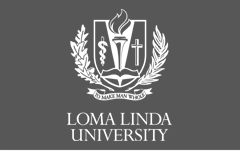Abstract
INTRODUCTION: Epstein-Barr virus (EBV), or Human Herpesvirus 4, is spread through oropharyngeal secretions among those infected and susceptible individuals. One distinct clinical entity of EBV is infectious mononucleosis (IM), which is classically characterized by fever, tonsillar pharyngitis, lymphadenopathy, and atypical lymphocytes. EBV, however, can affect any organ system and has been associated with other diseases such as hepatitis, cholestasis, pneumonia, pancreatitis, myocarditis, and glomerulonephritis. Interestingly, jaundice and hepatomegaly alone are less common clinical findings, but can be due to complications of IM including intrahepatic cholestasis or hemolytic anemia. The literature states that roughly 60% of patients with IM develop cold agglutinin hemolytic anemia. However, one such lab finding associated with IM that has been rarely reported in the literature, is a significantly elevated ferritin level. The elevation of ferritin in IM can be multifactorial. For instance, it can be elevated due to its role as an acute phase reactant in the setting of EBV infection, but also a result of autoimmune hemolytic anemia depending on the degree of hemolysis. In addition, significantly elevated ferritin can also contribute to hepatic damage resulting in a hepatitis and jaundice clinical picture. The pathogenesis of hepatitis in the setting of IM is not fully understood, but the literature states that EBV infected CD8+ T lymphocytes accumulate in the liver and can cause potential damage.
CASE REPORT: Our patient is a 27-year-old male with no previous medical history who presented to the ED with jaundice. Within the prior week, the patient stated that he had a history of subjective fevers, non-bilious, non-bloody emesis, and abdominal discomfort. During this time, he was able to tolerate oral intake without issue despite cramping abdominal pain that preceded the nausea and vomiting. Fever and abdominal pain were improved with Tylenol and Pepto Bismol. His symptoms resolved for a few days until 3 days prior to admission, the patient noticed decreased appetite along with an abnormally dark yellow urine. At this time, he denied any other symptoms. Upon admission, patient was found to have hyperbilirubinemia, transaminitis with both hepatocellular and cholestatic pattern, macrocytic anemia, leukocytosis with elevation in variant lymphocytes, borderline thrombocytopenia, and a ferritin level of 1,878. CT chest and abdomen showed lymphadenopathy and hepatosplenomegaly. Physical exam was unremarkable except for jaundice. Hepatology and hem/onc teams were consulted to rule out liver pathology or leukemia/lymphoma. Per consult recommendations, subsequent EBV studies were positive and cold hemolytic anemia was confirmed. Patient was treated with IV fluids and supportive care to which he responded well. Hemoglobin remained stable while bilirubin levels and jaundice improved. Liver enzymes are suspected to stay elevated for weeks to months and will require further follow up with hepatology clinic. In addition, patient will be followed by outpatient hematology and oncology due to the unusual monoclonal T-cells that were present on his peripheral smear, found after patient was discharged.
EBV is a rare causative agent of an extremely high ferritin level, painless jaundice, and acute hepatitis in the setting of IM. Therefore, IM should be considered as part of the differential diagnosis in a patient who presents in this fashion in order to increase awareness of its broad clinical presentation and subsequent patient management.
Recommended Citation
Mansour, Christina
(2020)
"Painless Jaundice with High Ferritin Level: A Rare Presentation of Infectious Mononucleosis,"
Loma Linda University Student Journal: Vol. 4:
Iss.
1, Article 7.
Available at:
https://scholarsrepository.llu.edu/llu-student-journal/vol4/iss1/7

